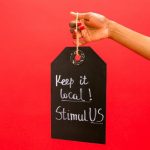First of all, let me tell you. Building a brand from scratch is not easy.
When I started thinking about how to connect the products I sell with the audience I wanted to reach,
“What logo should I use?”
“How do you want people who see the logo to feel?”
“Is there any response from the target audience?”
Such issues will inevitably arise.
If you’re reading this article now, you may be starting a business or considering rebranding, but here are the steps and branding strategies needed to build a strong brand identity. I would like to introduce you.
Table of Contents
What Is a “Brand” In The First Place?
A “brand” is not just a company name or logo that is easy to understand to differentiate you in the market.
“Brands are the impression people get from their business, some of which they can control and some of which they cannot.”
If you think about it, you can say that everyone has a personal brand. Each of us has a different name, face, style, and unique way of communicating, and these characteristics give different impressions to the people around us.
Similarly, businesses are made up of names, products, logos, colors, fonts, voices, and reputations, all of which influence the impression people make.
You can’t build a brand without consistency. As you grow your brand, it’s important to maintain its consistency throughout your business. But all of a brand begins with firmly establishing what its “consistency” looks like and what kind of atmosphere it wants to create.
How To Build a Brand
Brand building can be effectively summarized in the following seven steps.
- Survey of target audiences and competitors
- Focused content and personality selection
- Business name selection
- Creating a slogan
- Brand look (color and font) selection
- Logo design
- Use branding for business
I think it will be necessary to review these steps as the brand develops. But to shape your brand’s identity, it’s important to consider all these aspects.
Let’s start with building the foundation and decide how to start building the brand.
Survey your target audience and competitors Before making any decisions in building a brand, you need to understand the current market conditions of who your potential customers and competitors are.
There are the following ways to understand the market situation.
- Search Google for applicable product or service categories and analyze direct and indirect competitors.
- Check subreddits about customers and ask about topics and recommended products.
- Ask people who shop in your target market about which brand they are buying from.
- Check the SNS accounts and pages that your target audience is following.
- Shop online or offline to see how your customers check your site and buy products.
Please note the following as you proceed with the investigation.
- Who are the easiest customers to reach: Customers with the potential to sell easily
- Who are the top competitors: Market-based and most recognized brands
- What is the customer’s wording or topic of interest: the customer’s interest or tone of speech.
By writing them down, it becomes clear what your brand should focus on and how you should differentiate yourself from your competitors. Therefore, it is important to understand these contents first before proceeding.
Selection of content and personality to focus on
Building a brand that will appeal to everyone can be difficult, especially when you’re just starting out.
It’s important to find what you need to focus on when building your brand and find out what to do from it.
We have prepared some questions and branding exercises to help you imagine what you need to focus on and the mood of your brand.
What Is a Positioning Statement?
A positioning statement is a concise statement of a brand’s position or position in the market in one or two sentences. It doesn’t have to be on your website or business card, but it will help you answer your brand’s questions better and help you create your brand’s tagline.
Positioning Statement
We sell [Products / Services] for [Target Market] and provide [Value Proposal]. Unlike competitors, we are a Key Differentiator.
Example: We sell water bottles for hiking to reduce carbon dioxide emissions while encouraging hikers to rehydrate. Unlike other water bottle brands, we are working to plant one tree for each water bottle you purchase.
In addition, a unique value proposition is part of the even competition. Find the right one, take part in the competition and treat it as part of your brand’s message.
Instead, if the company you are starting up has a basic belief (eg, launching a social work, etc.), write it down as corporate philosophy and make a clear pledge to your customers and the world. Can be
What Are The Words Associated With a Brand?
One way to build a brand is to compare it to a person. Think about what kind of person he or she is, and what kind of person the customer is attracted to.
This analogy of a brand to a person is effective when deciding on the tone to use on SNS and what tone of visuals and documents to use.
What are the words that reflect the atmosphere of the brand and resonate with the audience? Here are some useful and fun branding exercises to come up with some such adjectives. For reference, I have given some examples as follows.
What Are The Metaphorical Expressions And Concepts That Accurately Represent The Brand?
Metaphorical or person-like representations of a brand can help identify the characteristics of the brand.
The analogy can be anything that reminds you of the atmosphere you want your brand to create, such as vehicles, animals, celebrities, sports teams, and so on.
For example, in order to build a brand targeting entrepreneurs, there is an idea to use a raccoon dog with a strong spirit, regardless of the means to achieve the goal.
If your brand was an animal, why not consider which animal you chose and why you chose it?
Business Name Selection
What is hidden in the name? In fact, depending on the type of business, you can divide the brand name into those that are important and those that are not.
As I said before, brands mean more than names. Brand personality, behavior, and reputation are what make a brand’s name in the market meaningful.
But for small business owners, “choosing a company name” is probably the first big decision. Once you have decided on a company name, it will affect a lot of things such as logos, domains, marketing, trademark registration, etc. (It is very difficult to register a general name of a product for sale as a brand name. is).
Ideally, your brand name should be difficult to copy and not confused with your existing competitors. Also, if you plan to expand your product line in the near future, it’s a good idea to think of a broader business name that makes it easier to reorient, rather than sticking to a product category.
You can use Shopify business name generator to explore some names or try one (or a combination) of the following approaches.
- Create your own words (eg “Pepsi”)
- Reinterpret irrelevant words (eg, brand name “Apple” on your computer)
- Use suggestive or figurative expressions (eg “Buffer”)
- Express as it is (Be careful because it is easy to imitate) (Example: “The Shoe Company”)
- Modify words by removing/adding some letters or adding Latin-style endings (eg “Tumblr (Tumbler)” or “Activia”)
- Make initials using the initials of long names (eg “HBO (Home Box Office)”)
- Combine two words (eg Pinterest (pinterest) or Snapple (snappy + apple))
In addition, the brand name also affects the domain / URL of the website, so be sure to do a thorough preliminary check before deciding on the brand name.
It’s also a good idea to gather close friends and conduct focus groups to see if the brand name you plan to use contains unintended meaning or if there is a brand name that closely resembles it.
Creating a Slogan
A catchy slogan that helps. A concise and descriptive tagline that can make a big impact with a small number of characters in a limited space such as an SNS profile, website header, business card, etc.
You can change your slogan whenever you want to start marketing from a new angle. Pepsi, for example, has used more than 30 slogans over the last few decades.
A good slogan is one that is short, easy to remember, and strong and memorable. Here are some recommended approaches to creating a slogan.
- Assertive expression. Example: Death Wish Coffee “The strongest coffee in the world”
- Figurative expression. Example: Redbull “Red Bull giving wings”
- Appoint the behavior of the customer. Example: Nike “Just do it”
- Take advantage of label headings. Cards Against Humanity “Party Game for Horrible People”
- Step on the rhyme. Example: Folgers Coffee “The best part of waking up is Folgers in your cup “
- Express as it is. Example: Aritzia “Fashion boutique for women”
Use Shopify Slogan Maker to come up with ideas for great slogans. Alternatively, you could arrange a position statement and create a slogan that could explain your business in one line.
Brand Look (Color And Font) Selection
Now that the name has been decided, it’s time to move on to how to visually represent the brand: color and typography. It’s a very effective step in building a website.
Choose Your Own Color
Deciding on a brand color helps not only define the brand but also convey the mood you want to express and make everything you do consistently. For your brand color, make sure you choose a color that can differentiate you from your direct competitors and not confuse your customers.
Color psychology is not an exact science, but it helps in making decisions, especially when deciding on the color of a logo.
The infographics here outline the emotions and associations that color commonly causes.
It is important to carefully observe the readability of the black and white text on the brand’s color palette and how the color text looks on the black and white background. We recommend using tools such as Coolors to choose colors that are easy to use. With the hexadecimal code handy, try different tones to find the one you like.
Choose Your Own Font
At this point, let’s start thinking about the fonts to use on your website.
To avoid confusing visitors, we recommend limiting the number of fonts to two. One is for the header and the other is for the body (the font used for the logo is different).
Why don’t you use Font Pair and choose a combination that is compatible with a wide range of options?
With Stylify. me, you can get a glimpse of the visual design details of your favorite website as an inspiration.
Logo Design
The company logo design may be the first thing that comes to your mind when building a brand. The logo is the face of the company and is justified because it is always integrated with the brand.
Logos should be unique, easy to identify, and (often overlooked) scalable to any size.
Profile image of the Facebook page from the website, and even up to the small favicon appearing on the tab of the browser, should the brand logo be displayed all please take into account the location.
For example, if you’re using a text logo on your Instagram profile image, it’s almost impossible to read the text. A better way is to create a square logo with an icon element so that it will be recognizable even if it is reduced to a smaller size.
Walmart uses both the “spark” icon logo and the wordmark logo, which can be used separately.
Below are some examples of logos that can help you interact with your designers so that you can choose the style that is most meaningful to your brand. Only famous companies. Also, in order to convey the atmosphere of the brand more effectively, please try to design a logo that is compatible with the brand color and font selected in advance.
Abstract Logo: Google Chrome
Abstract logos also have implications, but it is not easy to combine shapes and colors with reality.
The nice thing about abstract logos is that they don’t have a unique meaning. In other words, you can think about the meaning yourself and have the customer create it in their minds.
Mascot Logo: Wendy’s
The face of the character is usually used for the mascot logo. By giving your brand personality, you can bring humanity to your business. But be careful as it can give an outdated impression. The mascot logo is recommended only in certain cases (eg when you want to intentionally create a retro feel).
Emblem Logo: Starbucks
Emblem logo that is often round. Most of them are a combination of text and emblem, which gives them a strong presence and a dignified look. However, if the design is too complex, the impact may be reduced when the logo is reduced. If created the right way, it should have a positive impact on your brand and make a memorable logo.
Letter Mark logo: IBM
The letter mark logo is the initials of the entire business name. We recommend that you consider the lettermark logo, especially if your business name consists of three or more words and its initials are audible.
Icon Logo: Twitter
The icon logo shows the brand as a figurative image. Unlike abstract logos, icon logos reflect the nature of a product or service (for example, the Twitter logo bird is reminiscent of a short “tweet” (tweet/bird chirping) exchanged on the platform . ).
If your brand isn’t well established, you should avoid using the icon logo alone. However, if you are wondering what kind of logo you should use, it is a good idea to use a combination of the icon logo and the word mark.
Wordmark Logo: Facebook
A wordmark logo is a logo that arranges a brand name, brand color, and font to give it a visual identity. The problem with wordmarks is that they’re difficult to fit into a resizable square design, and when they’re scaled down they’re hard to read.
However, this problem can be solved by combining the icon logo or treating the first letter of the wordmark as the logo.
Combination Logo: McDonald’s
There are restrictions on any type of logo. Therefore, there are many logos that combine several types.
If you are prototyping a small new business logo and are wondering whether to use the wordmark or icon logo, we recommend using a combination logo. The combination logo can incorporate the best of both wordmarks and icon logos. You will be able to center your brand name in the front center while meeting the resizable logo requirements. For example, with the McDonald’s combination logo, even if the word mark does not fit, you can use the gold arch that symbolizes the brand.
If you don’t have design skills, you may want to ask someone to create your logo or use Shopify’s Watchful logo maker to try out some logos for free. You can easily make a cool logo.
Use Branding for The Entire Business
By applying branding to the entire business, it is possible to provide a unified brand story. In addition to reflecting the essence and significance of the business, the brand story creates an environment for interacting with customers in stores and online.
In Shopify’s research on “what earns the trust of customers,” many first-time online shoppers are interested in corporate goals and objectives and share the same values (eg, sustainability). And so on), I found out that I’m checking to see if I’m sharing. Visitors visit the “About Us” page to find out who they are buying from. Even more, socially conscious shoppers are even more aware of how their business operates. If your business has a brand story, share it positively.
This is because brand stories give shoppers a sense of security that they are a “legitimate business”.
Positioning statements can help you start your business. On the other hand, when creating a brand story, ask yourself the following questions.
- Why did you start a business?
- What is the significance of the company’s existence?
- How do you contribute to the world?
- What is the story behind the business that customers should know?
Not all businesses focus on their corporate mission, but if they have corporate goals and values, it’s a good idea to share with your customers “why you started your business” as a brand story. I will. As an example, let’s compare TOMS, which emphasizes its corporate mission, with Coca-Cola, which has a slightly different branding.
TOMS, which handles footwear and accessories, is a company that “improves life”. TOMMY’s first charity program, “One for One,” is working to donate shoes to children in need. Among the various charity initiatives, we recently donated to the COVID-19 Global Giving Fund. Shoppers can feel that they are making a social contribution when they purchase products from TOMS.
On the other hand, Coca-Cola, a world-renowned soft drink company, is not based on social improvement activities or environmental missions. However, we are appealing to the target market through the branding of “experience fun, happiness, and connection with friends.”
Customers of Coca-Cola products will be able to feel a social connection by enjoying the same products as their peers and loved ones.
For new business owners, there’s a lot to learn from Coca-Cola. You can find great ideas from timeless designs, fonts, images, colors, etc. that can be easily identified as Coca-Cola. If you need more inspiration for your branding strategy, there are many other great examples you can check out, such as the previous work from trusted branding strategy agencies.
Whether you build a brand story about your corporate goals or not, it’s important to provide a story that makes your customers think about your brand.
A brand That Grows And Evolves
Brand building does not end with the creation of logos and slogans, it will continue even after the brand is announced. To engage with your customers, your brand needs to be consistent, from themes you choose for your website, the creation of marketing materials, the packaging, and the delivery of your products.
As you shape and evolve your brand, you’ll learn to get your customers to know your brand better, who they are, and how to talk to them.
The important thing is to accept the fact that you don’t have complete control over how people perceive your brand.
You can guide your customers in the right direction, make a great first impression, and manage your company’s reputation, but you can’t control the brand impression that each customer feels in their hearts (for example, dislike). It will be difficult for those who have experienced good customer service).
When building a brand, it’s best to impress your customers everywhere and empathize with your core audience. In any case, we hope you have the tools, knowledge, and resources you need to get started with your brand.
Also Read : What Are Excellent New Business Ideas And Ways To Generate Material?







